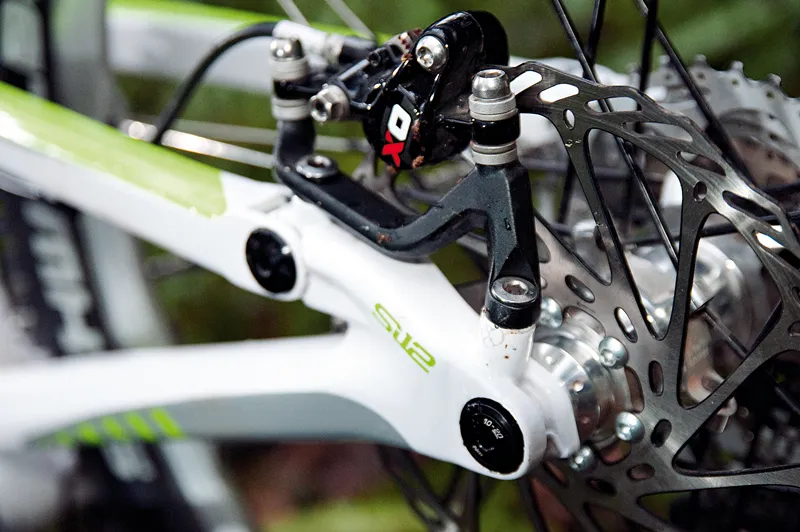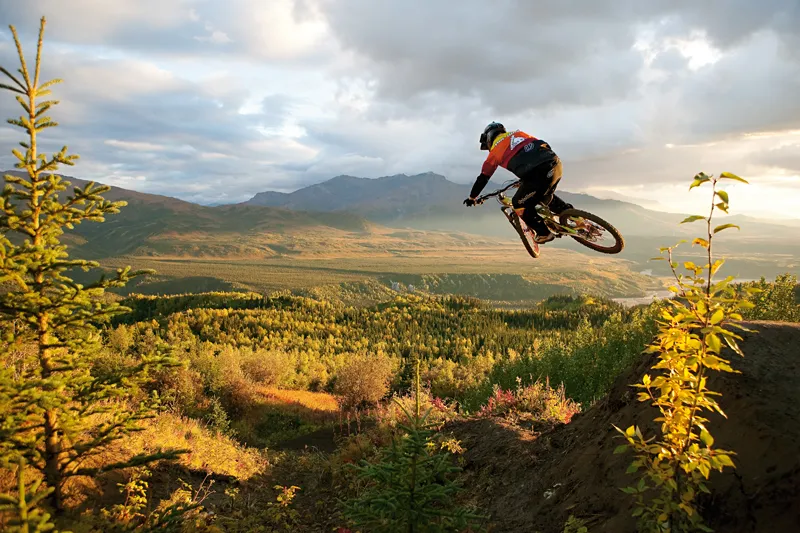All-mountain bikes can be ridden for many styles of riding on a massive variety of terrain. Full-suspension all-mountain bikes offer anything from 140 to 160mm (5.5 to 6.3in) of front and rear travel, climb pretty efficiently and still let you get a little loose on the descents. But design constraints and shock technology mean there will always be an element of compromise. A bike that climbs like a cross-country bike won’t necessarily descend like a downhill bike.
Cannondale have always been at the cutting edge thanks to their huge investment in research and development. About two years ago they began to tackle ‘all-mountain’ bikes in a bid to create something a little different. “We really needed a bike that could be two different bikes. The inspiration was really more of a dogged refusal to compromise,” says Murray Washburn, global marketing manager. “We wanted to create a bike that could hang with the short-travel cross-country crowd on the climbs and with the full-face [helmet], body armour crew on the descents.” And so the Jekyll was born.
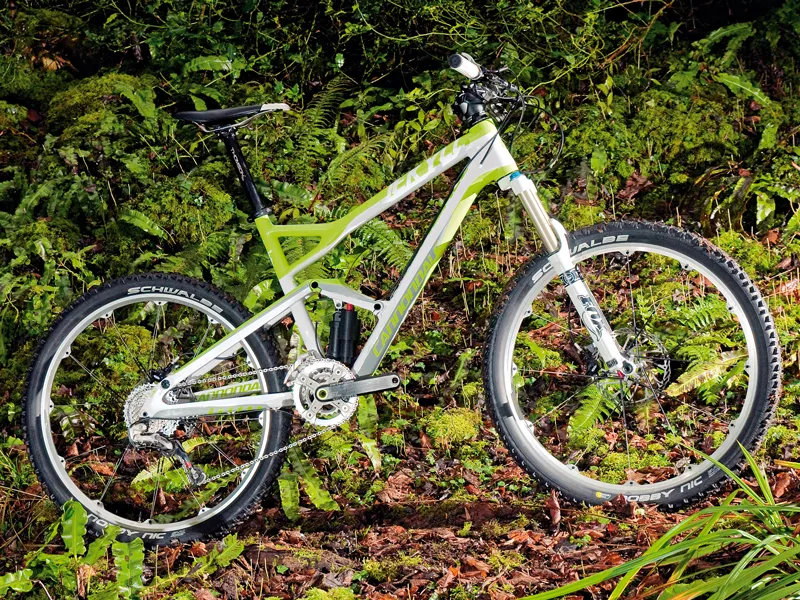
Jekyll and Hyde
To create a bike that could be ridden anywhere without compromise is a mighty task. Cannondale knew that a regular rear shock wouldn’t cut it so they collaborated with Fox to create the DYAD RT2. The shock and frame were designed simultaneously so the motion ratios of the shock linkage would fully complement the damping characteristics of the shock.
The DYAD RT2 is effectively two different shocks, each offering different amounts of travel with different damping and spring rates all built into one stocky unit. The DYAD RT2 is in theory similar, in some senses, to other travel-adjust shocks, but Cannondale claim that Fox have managed to completely separate the short- from the full-travel damping and have since patented this innovation.
Within the stout little pull shock sits two sets of damping circuitry, two positive air chambers (one large, one small) and an independently adjustable single negative air chamber, all tied together with a central body that houses the spool valve that lets you switch between the two modes. They’re easy to switch between thanks to the bar-mounted lever, which lets you get the most out of what Cannondale call Altitude Adjustable Geometry.
The Elevate mode is designed for climbing and only uses 90mm (3.5in) of travel, a steep, progressive spring rate with more cross-country orientated damping, only one of the positive air chambers is used and sag is cut by around 40 percent, promoting a more efficient climbing position.
Select the Flow mode and there’s 150mm (5.9in) of travel on tap, downhill orientated damping and spring rate, and both positive air chambers are activated to provide a higher volume and more linear feel. The geometry becomes more aggressive – slackening the head angle and dropping the bottom bracket – so you can get the most out of hammering down the hills.
Stronger than average?
The Jekyll has been constructed from Cannondale’s new high strength, high impact carbon fibre, BallisTec. This is made from ultra high strength fibres that were developed by the Japanese military for ballistic armouring. These are then paired with proprietary high impact resistant hot melt resins, followed by the addition of stiffer, more brittle high- and ultra-high-modulus carbon fibres which are strategically placed in protected areas.
This final addition both enhances feel and the frames stiffness. “Rather than just shielding particular areas of the frame with tough carbon, we build the entire frame out of seriously tough, impact-resistant carbon,” says Murray.
Combining this material technology with the Jekyll’s ultra wide bearing placement, double stacked bearings at the rear dropout pivot, the 12 x 142mm bolt-through rear axle, double clamped pivot axles and a collet shim linkage bearing preload system makes for one hell of a stiff yet lively ride. Along with the new two-in-one DYAD RT2 shock, this proves that the Jekyll is worthy of 'superbike' status.
Key features
Super-stiff
The Jekyll uses Cannondale’s ECS-TC (Enhanced Centre Stiffness, Torsion Control) system to make sure there’s no unwanted flex or play through the suspension system. Cannondale claim this makes for a more controlled and responsive ride. ECS-TC is comprised of five separate component parts that mesh together to achieve their requirements. One of these is the ultra wide bearing placement seen here at the main linkage pivot. The use of the 15mm oversize pivot axle with the linkage securely clamped in place also helps with this.
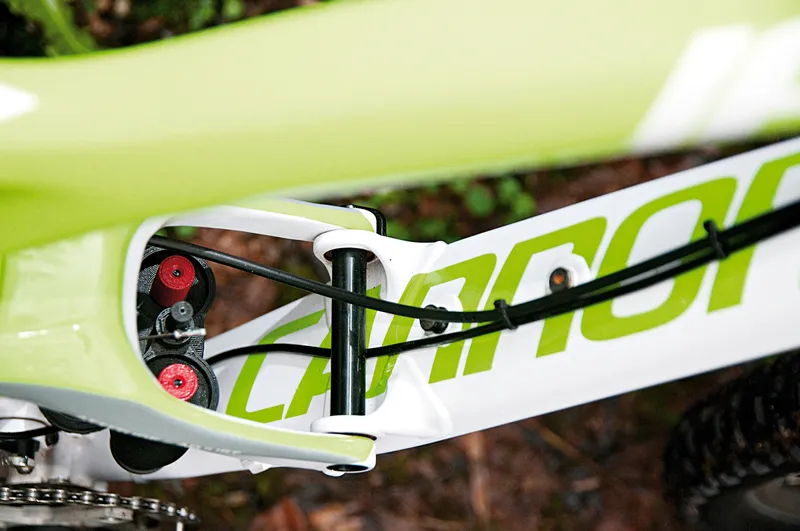
Shocking results
“For us, working with Fox was simply fantastic,” says Washburn. “Dennis Wooten and Bryan Anderson just cracked the throttle open and didn’t let off until the shock was in production. It was awesome. They came up with some really creative solutions to the technical problems, including an innovation for completely separate short-travel damping from the full-travel damping that they've since patented." With Fox taking care of the shock, this left the Cannondale engineers free to focus on the frame, which led to the ECS-TC system.
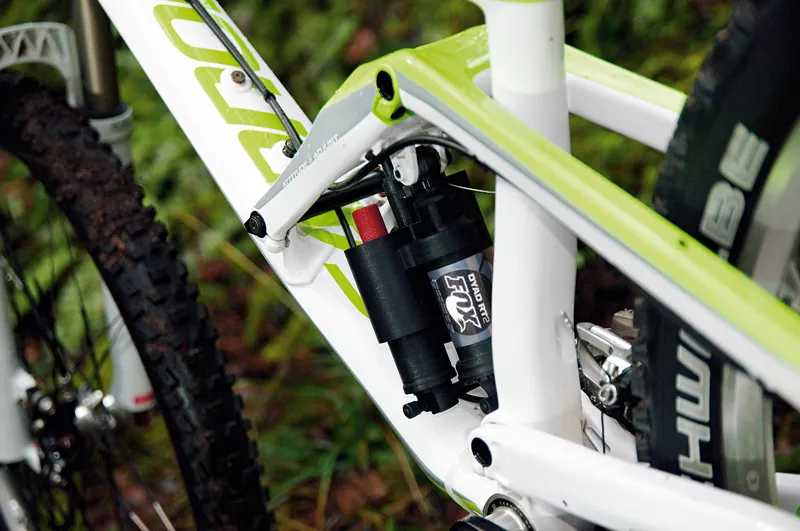
Rear mech mount
Bending your rear mech hanger is a frequent problem and with more common use of ultra precise 10-speed setups, can be more of an issue than ever. Cannondale use what they refer to as a ‘Sandwich Style’ rear mech hanger which clamps both sides of the dropout, making for an improved and strengthened mech-to-frame connection.

Top tube
Named by Cannondale as the ‘Clashinikov Top Tube’ due to its resemblance to the Kalashnikov rifle, this top tube is vertically tapered and massively oversized where it meets the head tube. This increases its stiffness and strength where it counts. As it heads towards the seat tube, it splits in two and effectively double braces the seat tube for more added stiffness and better load distribution.
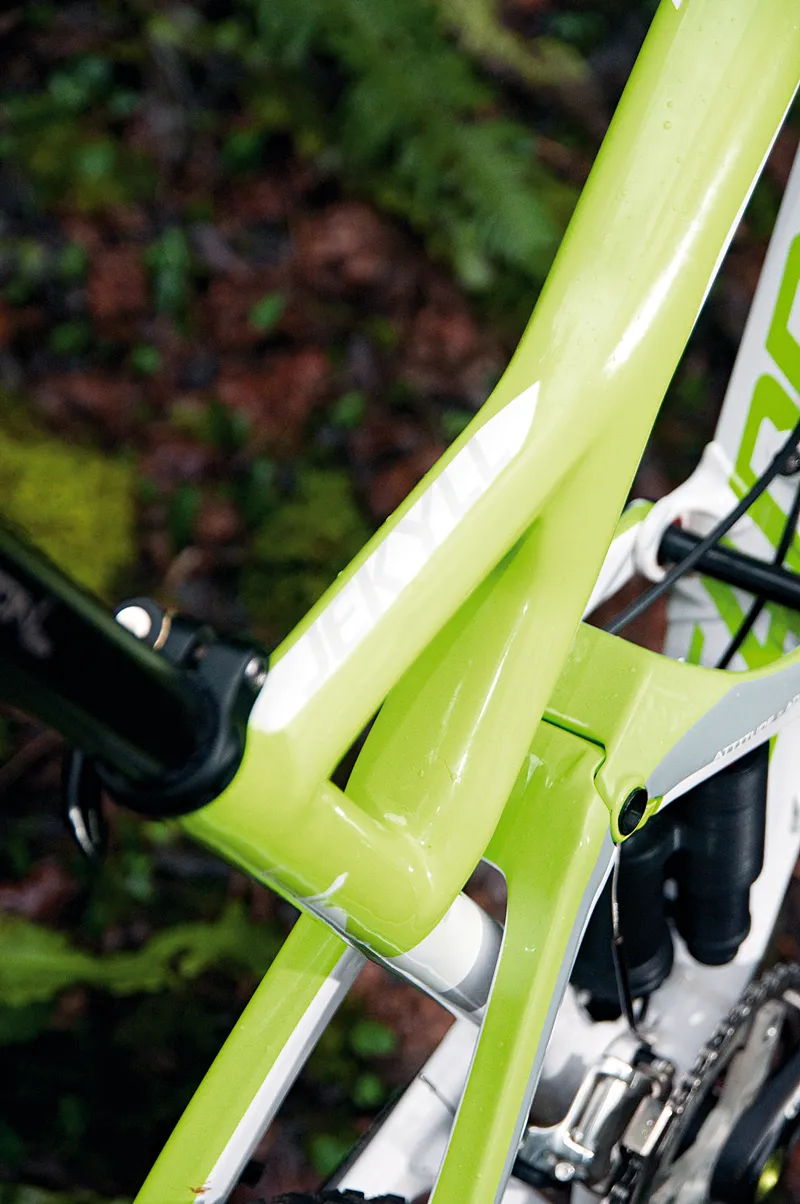
Dropouts
The rear dropout pivots play a crucial roll in maintaining the super-stiff rear end. The dropout pivots are subjected to extremely high loads which inevitably takes their toll on the pivot bearings durability and strength. Cannondale have placed two bearings side by side in each pivot as this effectively cross braces the pivot and should help enhance durability. Couple this with the Synace X-12 (12 x 142mm) through-axle and you’ve got one hell of a sturdy rear end.
